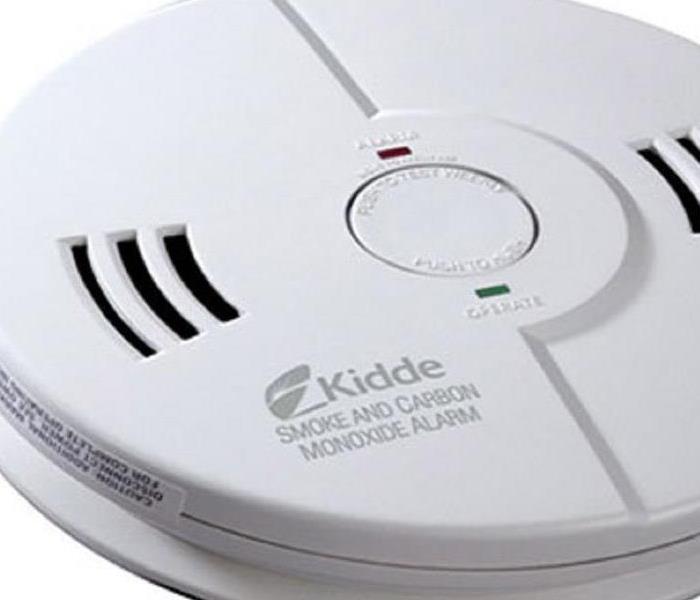Preparedness Profile: Sound the Alarm
9/19/2018 (Permalink)
There is no reason to be alarmed by this week’s Preparedness Profile! We’re simply talking about some of the important alarms/detectors you should have in your home to ensure your family’s safety.
Those include: smoke, carbon monoxide and radon detectors.
At this point, it’s likely you have at least one smoke detector in your home. These are designed to sound an alarm when smoke is in the vicinity of the detector. However, one alarm is not enough to ensure your safety, especially if that device is not working.
The National Fire Protection Association (NFPA) has a few tips when it comes to installing and maintaining smoke alarms in your home:
- Install smoke alarms in each bedroom.
- Install smoke alarms outside each sleeping area.
- Install smoke alarms on each level of your home, including your basement.
- On levels without bedrooms, install alarms in living rooms or dens and/or at the bottom of staircases.
- Smoke alarms should be mounted high on walls or on ceilings.
- Smoke alarms should be at least 10 feet from any cooking appliances to prevent them being set off by cooking.
- Test your alarms once a month to ensure they’re working.
- Change batteries at least once a year. If you have ten-year battery-operated alarms, make sure to buy new ones every ten years.
- The alarms will chirp if the batteries are low.
- Keep alarms clean and follow all manufacturer’s instructions for maintenance.
According to the NFPA, about 3 out of every 5 fire-related deaths occur in homes with no working smoke alarms.
The bottom line: smoke alarms save lives. So, make them a top priority in your home.
Now we move on to carbon monoxide detectors. Carbon monoxide (CO) is a colorless, odorless gas that is known as the “invisible killer.” The NFPA says the deadly gas is created when fuels like wood, propane and gas burn incompletely.
A large amount of carbon monoxide can kill a person in a short amount of time, while a small amount of the gas can kill a person over a longer amount of time. This is why CO detectors/alarms are so important for your home.
The tips for CO alarms are similar as those for smoke alarms. The NFPA advises:
- Install CO alarms in a central location outside each sleeping area.
- Install CO alarms on every floor of the home, including basement.
- Follow manufacturer’s instructions for installations and placement.
- Test batteries once a month, replace yearly (or if the alarm chirps, signaling low battery)
- If the alarm sounds immediately move all people and pets out of the home and call for emergency responders.
Remember: because carbon monoxide is invisible to the senses you will not be able to tell if It’s in your house. That means you need an alarm to do that for you!
And finally, we are talking radon. Radon is probably the least talked about behind smoke and carbon monoxide, but it poses significant dangers too.
According to the CDC, radon is the second leading cause of lung cancer after cigarette smoking, resulting in about 20,000 deaths every year.
Like CO, radon is a colorless gas that you cannot see or taste. The CDC explains that radon occurs naturally in the ground and is created when radioactive metals like uranium, thorium, or radium break down. The gas can then seep into your home through cracks and crevices.
The CDC says you should test your home for radon levels. You can do so using a kit, which you can buy online or in most home improvement stores. If your test shows high radon levels you can make changes to your home to lower those levels, like sealing up cracks. The CDC does recommend hiring a professional to make those changes, however, if you’re not an expert yourself.
These are just three easy things you can do to ensure your home is safe for you and your family. So, take the opportunity to get into the spirit of National Preparedness Month and make sure you have all the smoke and carbon monoxide detectors your home needs and do a radon test for good measure!
Remember, you’ll have a lot less cause for alarm in the future if you take the steps to prepare now!


 24/7 Emergency Service
24/7 Emergency Service
